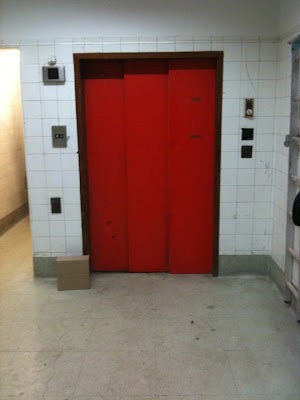
A curious legend is associated with the immediate surroundings of Senate House - the tale of the Field of the Forty Footsteps. During the 17th and 18th centuries, the fields situated due north of Montague House (whose site is now occupied by part of the British Museum), were known as a place of ill-repute. This location - first known as the Long Fields, and latterly as Southampton Fields - was notorious as a meeting-place for duellists.
Legend has it that, at the time of the Duke of Monmouth’s rebellion (1685), two brothers were besotted by the same lady, who refused to choose between the two of them. Opting to fight for her affections at the traditional duelling ground of Southampton Fields, the unfortunate pair were both mortally wounded, and died there. It was said that the exact location of their duel could still be observed many years later, since the grass would not grow on those spots where their feet had trod during their deadly contest.
“The footsteps were in the middle of the field, and forty in number, and...were each imprinted by the approach and struggle of two combatants, who had fought, and perished there, in the dead lock of mutual hatred.” [
Coming Out; and The Field of the Forty Footsteps (in 3 volumes), Jane and Anna Maria Porter, London: Longman, Rees, Orme, Browne & Green, 1828 (vol.3, p.5)]
A letter addressed to the poet Robert Southey (1774-1843), from his friend John Walsh, encouraged Southey to visit the Fields:
“I think it would be worth your while to take a view of those wonderful marks of the Lord’s hatred to duelling called ‘The Brothers’ Steps.’ They are in a field about a third of a mile northward from Montague house...The prints of their feet are about the depth of three inches, and nothing will vegetate them so much as to disfigure them...Mr George Hall, who was the Librarian of Lincoln’s Inn, first showed me these steps twenty-eight years ago...he remembered them about thirty years, and the man who first showed them to him about thirty more, which goes back to the year 1692...My mother well remembered their being ploughed up and corn sown to displace them, about fifty years ago, but all was labour in vain, for the prints returned in a while to their pristine form...” [
Southey's Common-place book, Second series, Special Collections, Robert Southey (edited by John Wood Warter), London: Longman, Browne, Green & Longmans, 1850 (‘Curse of Duelling’, pp.20-21)]
Southey went in search of the footsteps and found them:
“about three-quarters of a mile of [sic] Montagu House, and about five hundred yards east of Tottenham Court Road. The steps answered Mr Walsh’s description. They are of the size of a large human foot, about three inches deep, and lie nearly from north-east to south-west...the place where one or both of the brothers are supposed to have fallen is still bare of grass. [We also saw] the bank where (the tradition is) the wretched woman sat to see the combat.” [
Ibid, (p.21)]
In the early twentieth century, the writer and Spiritualist Jessie Adelaide Middleton investigated the legend, and believed that she had established the precise location of the mysterious footsteps. In her collection ‘Another Grey Ghost Book’ she wrote:
“I often wonder if those who sleep calmly and peacefully in the quiet lodging-houses of Torrington Square ever guess that the ground over which they are sleeping was once the scene of a desperate tragedy...As regards the exact locality, I have taken great pains to confirm it, and from various sources have ascertained that no doubt it covered what is now Torrington Square...” [
Another Grey Ghost Book, Jessie Adelaide Middleton, London: E. Nash, 1914, (pp.49-60)]
The footprints may still be observed by the curious (and imaginative) visitor. Just north of Senate House and in front of Birkbeck College, is a recently re-designed ‘piazza’, still bearing its original name of Torrington Square. Is it mere co-incidence that the four grassed areas, newly planted, already have distinct bare patches the size of footsteps?


































